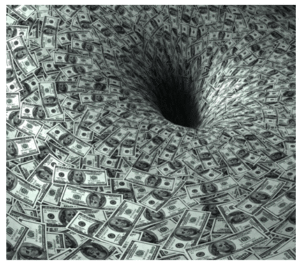The billions of dollars the retail industry loses every year due to shoplifting and employee theft have not decreased, but rather will likely continue to increase every year. Deaths due to shoplifting are not rare anymore. News about managers and employees getting shot while trying to stop a shoplifter is commonplace now. Training your LP staff to follow strict regulations when approaching a shoplifter should be a top priority for your business.
Read more about this topic by following the links below.
To stop a thief: Shoplifting is a daily battle for retailers
On any given day, more than $35 million worth of merchandise is stolen from retail stores across the country by shoplifters – amateurs and professionals alike – who steal clothing, jewelry, electronics and a host of other items, including food.
Some sneak quickly and quietly with the merchandise, others make bold getaway attempts.
In Tupelo, the retail and financial hub of Northeast Mississippi, the Tupelo Police Department gets hundreds of reports each year.
In 2014, TPD took 483 reports related to shoplifting, according to TPD Public Information Officer Chuck McDougald. Last year, that number fell to 260. So far this year, the department has taken 162 calls.
“Higher shopping volume days correspond to more shoplifting calls,” he said. “Those include weekends and holidays.”
As for the timing of when shoplifters are busiest, apparently they’re not early risers.
RETAIL INVENTORY SHRINKAGE INCREASED TO $45.2 BILLION IN 2015
The 2016 National Retail Security Survey, conducted in collaboration by the National Retail Federation and the University of Florida, reveals that retailers’ inventory shrink averaged 1.38 percent of retail sales, or $45.2 billion in 2015, up by $1.2 billion from 2014.
According to the report, 47 percent of retailers surveyed reported increases in overall inventory shrink in 2015, with shoplifting accounting for the greatest cause with an average loss of $377 per incident (39 percent), up nearly $60 from 2014.
Robberies continue to be a growing expense for retailers, costing an average of $8,180.17, up from $2,465. The rise in robberies in 2015 was driven by an increase in jewelry stores reporting extremely high average losses.
“With a constantly evolving retail landscape, loss prevention becomes more complex every day,” said NRF Vice President of Loss Prevention Bob Moraca. “LP professionals have been working diligently to find advancements in technology aimed at deterring crime in our industry, sometimes even before it happens – but as our techniques get more sophisticated, so too do the criminals.”
Shoplifting: Retail’s $45 Billion Problem
Retailers are struggling to keep tabs on shoplifters who are increasingly becoming their top source of loss, averaging $377 per incidence, up $60 from the year before.
At 39 percent, shoplifting was found to be the biggest contributor among factors that led to overall inventory shrinkage in 2015 causing a $45.2 billion loss across the United States, according to NRF’s 2016 National Retail Security survey. The new numbers reflect a $1.2 billion increase in losses from 2014.
The inventory shrink averaged 1.38 percent of retail sales and saw 47 percent of retailers reporting losses in 2015.
“With a constantly evolving retail landscape, loss prevention becomes more complex every day,” said NRF Vice President of Loss Prevention Bob Moraca. “LP professionals have been working diligently to find advancements in technology aimed at deterring crime in our industry, sometimes even before it happens – but as our techniques get more sophisticated, so too do the criminals.”
Another factor adding to inventory shrinkage was a rise in robberies that exclusively targeted jewelry stores. The average loss reported by robbed stores increased from $2,465 per incidence in 2014 to $8,180.17 last year.
“Loss prevention professionals continue to do an exceptional job at locating the issues and finding solutions to prevent additional loss in their retail stores,” said Dr. Richard Hollinger, University of Florida criminology professor and lead author of the NRSS. “It is important for retailers to continue building relationships with law enforcement and leverage new technologies that can further provide protection to their assets, customers and employees.”


 The amount of calls reported by Walmart stores to the local police are staggering.
The amount of calls reported by Walmart stores to the local police are staggering.
 Yep, you probably are! The shoplifter that walked out the door with your $45 item cost you MORE actual money than $45!
Yep, you probably are! The shoplifter that walked out the door with your $45 item cost you MORE actual money than $45! I’m sure you’ve already read how shoplifters cost you money. It’s probably hard to digest the dire financial implications that shoplifters have on all of our businesses. Without adequate controls in place, you are putting your business and your financial well-being at risk, and honestly, you just can’t do that. That’s why we have to have a camera system and why EAS systems are a necessity and not just a “nice to have” technology. That’s exactly why we have to invest in exception reporting tools to help us identify criminal activity and why we preach the value of exceptional customer service in our stores.
I’m sure you’ve already read how shoplifters cost you money. It’s probably hard to digest the dire financial implications that shoplifters have on all of our businesses. Without adequate controls in place, you are putting your business and your financial well-being at risk, and honestly, you just can’t do that. That’s why we have to have a camera system and why EAS systems are a necessity and not just a “nice to have” technology. That’s exactly why we have to invest in exception reporting tools to help us identify criminal activity and why we preach the value of exceptional customer service in our stores. You have (or I hope you have) read the last article on preventing check fraud. It’s a great way to protect your business from a different avenue of fraud. Another, much more popular and prevalent scheme is credit card fraud. The United States lags far behind the other major countries in the fight against credit card fraud. We’ve only just begun adopting chip and pin technology and it will be several more years before we see magnetic strips become a relic of the past. So exactly how can you identify and prevent a fraudulent change from happening in your store and how exactly do you lose money on these transactions?
You have (or I hope you have) read the last article on preventing check fraud. It’s a great way to protect your business from a different avenue of fraud. Another, much more popular and prevalent scheme is credit card fraud. The United States lags far behind the other major countries in the fight against credit card fraud. We’ve only just begun adopting chip and pin technology and it will be several more years before we see magnetic strips become a relic of the past. So exactly how can you identify and prevent a fraudulent change from happening in your store and how exactly do you lose money on these transactions? You know, we talk about the thousands of ways you, the small business owner, loses money to thieves constantly. Most of that is centered on shoplifters and boosters stealing your merchandise. We talk about that for good reason… it’s one of the biggest financial impacts to your business if left unchecked. However, there are so many other ways that your business can be targeted by criminals and some of them may appear so legitimate, that you would have no idea you were a victim for weeks. In that time, the criminal is long gone and you’re left paying for that theft out of your pocket. One area of training that is often overlooked in retail is check fraud. I’ll give you some advice on how to identify this in your store and protect yourself from vulnerability.
You know, we talk about the thousands of ways you, the small business owner, loses money to thieves constantly. Most of that is centered on shoplifters and boosters stealing your merchandise. We talk about that for good reason… it’s one of the biggest financial impacts to your business if left unchecked. However, there are so many other ways that your business can be targeted by criminals and some of them may appear so legitimate, that you would have no idea you were a victim for weeks. In that time, the criminal is long gone and you’re left paying for that theft out of your pocket. One area of training that is often overlooked in retail is check fraud. I’ll give you some advice on how to identify this in your store and protect yourself from vulnerability.